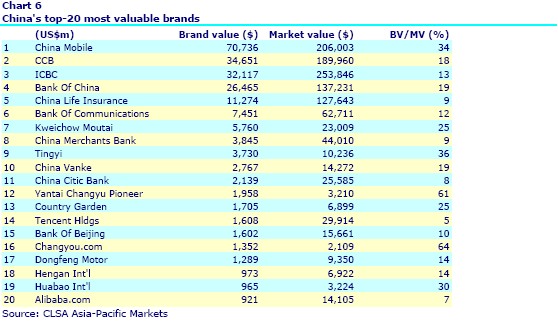Recently we reviewed the Top 100 Consumer Brands in China. Today lets look at The 20 Most Valuable Brands brands in China.
CLSA compiled this list “by reviewing both the brand strength and the market conditions of the industry. The number of Chinese companies with positive brand equity is increasing, particularly in the Banks, Consumer Electronics, Food and Beverage, Internet Services, Retail and Apparel sectors. A list of the top-20 companies is led again by China Mobile, and the major financial institutions.”
The 20 Most Valuable Brands brands in China
Source: CLSA Asia-Pacific Markets
Some of the above companies that trade in the US markets are:
1. China Mobile Ltd. (CHL)
2. Bank of China Ltd (OTC: BACHY)
3. China Life Insurance Co. Ltd. (LFC)
4. China Merchants Bank (OTC: CIHKF)
5. Changyou.com Limited (CYOU)
6. Alibaba.com (OTC: ALBCF)
